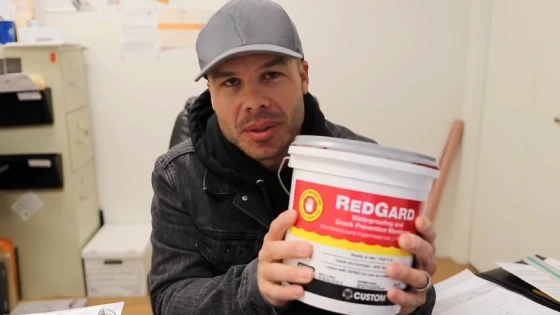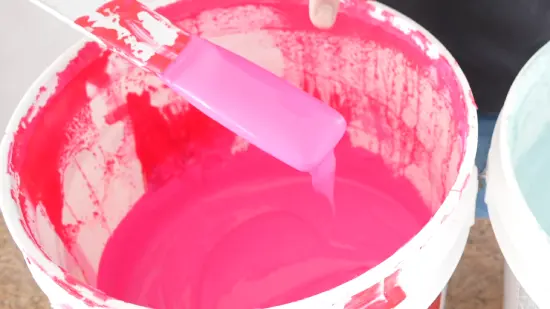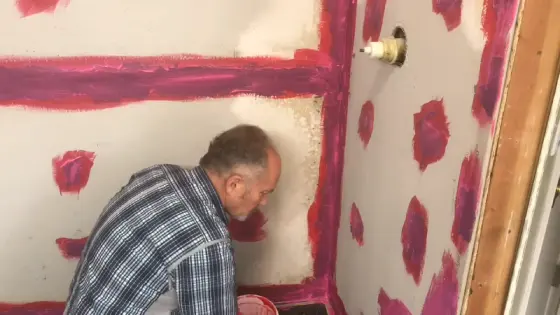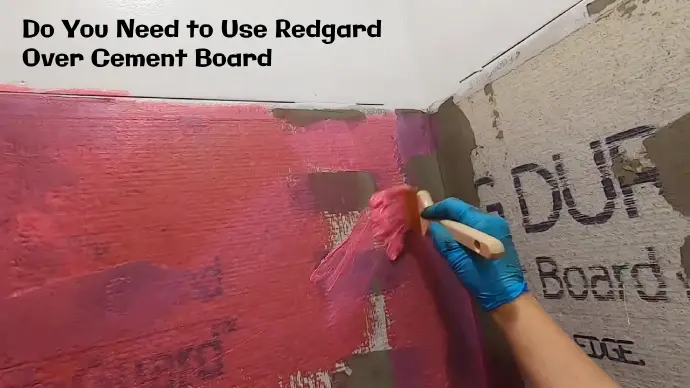Last Updated on September 13, 2023
If you plan to install cement boards in your bathroom or kitchen, you may wonder whether you need to use a waterproofing product like Redgard. The truth is it depends on the quality of the cement board you’re using. If you’re using high-quality cement board, there’s no need for Redgard.
On the other hand, if you want that extra layer of protection, use it. Applying Redgard over the boards before tiling ensures that your walls are waterproof and provide added protection against cracks and leaks.
So whether you’re a seasoned DIYer or a first-time renovator, read on to find out how to give your bathroom or kitchen that extra layer of protection with Redgard.
How Do You Use Redgard Over Cement Board?

You might be wondering how to use RedGard over cement board. It’s a pretty straightforward process. Listed below are the steps you should follow:
Step ONE: Add Cement Board Tape to All Seams
Add self-adhesive alkali-resistant fiberglass tape to all the seams where cement board panels meet to make your tiling project strong and durable. Apply a thin layer of thin-set mortar and smooth out any bumps. Use a level to check for peaks or valleys and fix them if necessary.
Also, apply thin-set mortar to all screw heads in the cement board. With these steps, you’ll have a sturdy foundation and won’t require an additional layer of Redgard over the cement board.
Step TWO: Allow the Thin-Set to Dry
Now that you’ve applied the thin-set mortar, it’s time to allow it to dry. This will take around a day to ensure a solid foundation for your tiles, preventing any wobbling or shifting.
Check with a level if there is any unevenness in areas where you install smaller tiles like subway tiles. For the installation to be successful, the surface must be perfectly flat.
Step THREE: Prep Work for RedGard
Now, let’s protect your tub from any RedGard drips. Apply blue tape and a piece of cardboard to prevent any damage. This will ensure that your tub remains unharmed during the process.
Aside from that, spray water on all corners of your cement board before moving on to the next step. This is crucial as it ensures that RedGard adheres well and bonds strongly with the surface. You can achieve this by using a sponge and a bucket of water.
Pay special attention to these areas, as they ensure good adhesion. With these precautions taken care of, you can move onto Step Four confidently, knowing that your tub is protected and ready for the RedGard application.
Step FOUR: Applying RedGard
Protect your tub with blue tape and cardboard, and dampen the corners of your cement board with water. Remember to wear a respirator to protect yourself from the strong odor of RedGard.
Then, apply RedGard using a 3/4 inch nap roller or trowel. Roll it on the wall vertically, starting with the first coat. Trowel it in unreachable areas such as corners.
Use a good-quality roller that won’t shed into the RedGard. Pay close attention to applying a good coat of RedGard to all the corners and areas adjacent to the tub where water penetration is more likely.
Step FIVE: Drying Time
After applying the first coat of RedGard, give it enough time to dry completely. The drying time can vary depending on temperature and humidity, but it should take about 1 to 1.5 hours. During this time, the panels will appear red and then turn pink once it’s dry.
Once the first coat is dry, apply the second coat horizontally and achieve thorough and even coverage. When the second coat dries, your bathtub walls will be fully waterproof and protected against moisture damage. It is important to be patient during the drying process for guaranteed protection.
Does one coat of Redgard work on a cement board?

In a professional context, applying at least one full coat of undiluted RedGard to dry cement boards before tile installation is strongly recommended. This will ensure a strong bond and proper protection. For added protection, we recommend at least two coats.
This will provide more thorough coverage and bolster the overall durability of the installation. Overlooking this crucial step can jeopardize the tiles’ integrity and harm the entire system’s longevity. Therefore, applying multiple coats of RedGard when working with cement boards is the best practice.
Can Redgard prevent cracks in cement boards?
Redgard’s waterproof membrane barrier can prevent cracks in indoor and outdoor cement boards. It reduces crack transmission and creates a waterproof barrier on interior and exterior substrates. Applying Redgard over the cement board protects it from moisture damage that can cause cracks over time.
Its ability to prevent water intrusion also results in long-lasting, intact cement boards, saving you from costly repairs due to cracked cement boards. Use Redgard as a preventative measure during installation for best results.
Is a vapor barrier necessary when using Redgard over cement board?
When using Redgard on cement boards, it’s essential to determine if a vapor barrier is necessary. If you’re employing a topical waterproofing membrane like Redgard, you don’t need a moisture or vapor barrier behind your substrate because the membrane functions as a barrier.
However, if you already have a vapor or moisture barrier behind your substrate, don’t use Redgard on top since it can cause adhesion problems. Always read the manufacturer’s instructions and consult a professional if you need clarification on what products to use for your specific project.
Prevent Moisture Damage with Redgard Waterproofing

You should use Redgard over the cement board for waterproofing and preventing moisture damage. Applying it correctly involves ensuring the board is clean, mixing the Redgard properly, and covering every surface, including seams and corners.
Redgard protects against dampness and allows for movement without damaging tiles or grout. A vapor barrier isn’t necessary but may be beneficial in humid climates or high-moisture areas. As a result, Redgard is an easy and essential step that prevents cracks and protects your tiling projects.



